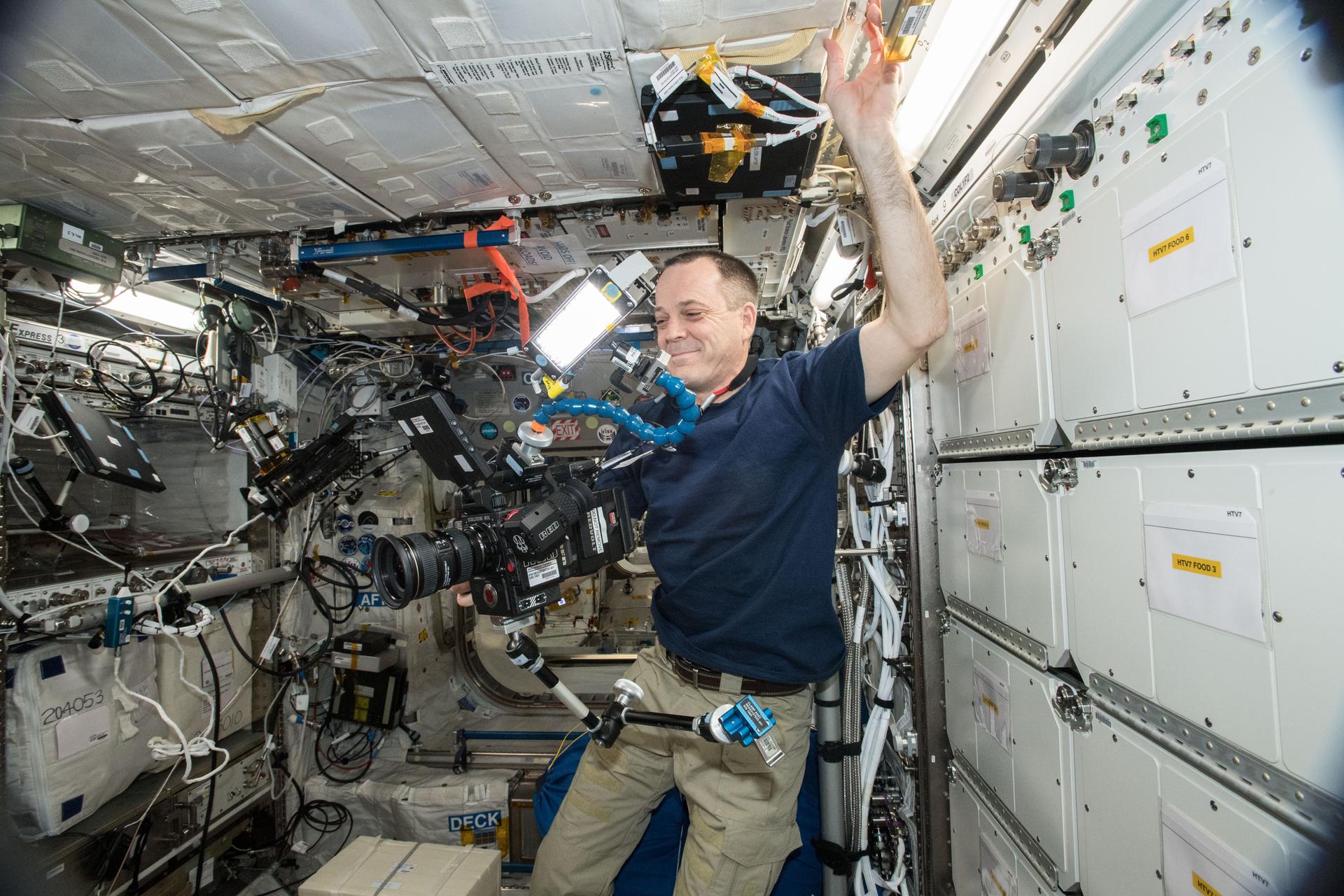In This Week’s Star
- Marshall Imagery Experts Instrumental in First 8K Footage from Space
- Rocket Science in 60 Seconds: EM-1 and the Power Needed to Get to the Moon
- Marshall Director Jody Singer Addresses National Space Club Huntsville
- International Space Station Astronaut Mark Vande Hei Visits Marshall Nov. 9
- Sweet Sounds Fill Marshall’s Native American Heritage Month Program
- Marshall Donates Over 40,000 Pounds of Food to Feds Feeds Families Campaign
- This Week in NASA History: Marshall Technicians Acceptance-Fire the S-IC-3 – Nov. 15, 1966
- Obituaries
Marshall Imagery Experts Instrumental in First 8K Footage from Space
By Jonathan Deal
When the first high-definition television footage was shot from space 20 years ago, few people on Earth even knew what a HD television was. A few years later, high definition became the standard in televisions across the world.
NASA videographers are once again on the cutting edge of digital imaging technology after recently capturing the first 8K ultra high definition video of astronauts living, working and conducting research from the International Space Station.
“When it comes to spaceflight, I’m always trying to be a generation or two ahead of what is operational,” said Rodney Grubbs, who leads the NASA’s Imagery Expert Program, managed at the agency’s Marshall Space Flight Center. “When we did the first live HDTV downlink, it was clunky and it was a one-off experiment and now it’s routine and we’re doing HD live all the time. Maybe someday we’ll be doing 4K or 8K live all the time. I’m trying to stay five to 10 years ahead of current technology.”
Grubbs and his team have collaborated with imagery experts at NASA’s Johnson Space Center to send the first HD camera to the space station, the first live HDTV feed from space, the first 3D HD camera in space, the first digital cinema camera in space, the first live UHD in space and, now, the first 8K camera in space — capable of recording images with four times the resolution than previously offered.
The Helium 8K camera by RED, a digital cinema company based in Irvine, California, is capable of shooting at resolutions ranging from conventional HDTV up to 8K, specifically 8192 x 4320 pixels. By comparison, the average HD consumer television displays up to 1920 x 1080 pixels of resolution, and digital cinemas typically project in resolutions of 2K to 4K.
The RED camera was delivered to the station in April aboard the 14th SpaceX cargo resupply mission through a Space Act Agreement between NASA and RED. The camera’s ability to record twice the pixels and at resolutions four times higher than the 4K version of their camera brings more science in orbit into the homes, laboratories and classrooms of everyone on Earth.
“Because of crew time, we didn’t get a lot things shot from it at first,” said Grubbs. “We really wanted to highlight the use of the camera for science, so we waited to release the footage until we could emphasize some of the cutting-edge science experiments on the station.”
Science experiments filmed with the RED include studying dynamic forces between sediment particles with BCAT-CS; learning about genetic differences in space-grown and Earth-grown plants with Plant Habitat-1; and observing low-speed water jets to improve combustion processes within engines with Atomization.
The camera will also allow crew members to shoot 8K video as they explore station facilities such as the MELFI, Plant Habitat, Life Support Rack, JEM Airlock and Canadarm2.
Although few people are able to view the 8K video at this time, shooting in the highest quality possible allows Grubbs and other NASA videographers more flexibility in the editing process and ultimately produces a more vivid, dynamic video. The RED camera is the same brand used to record theatrical releases such as “The Hobbit” trilogy. “Guardians of the Galaxy Volume 2,” and television programs such as, “Stranger Things,” “Maniac,” and “Lost in Space.”
“What filmmakers are more and more interested in these days is more dynamic range — the ability to get light and dark, all in the same image — and more resolution. That’s the direction the whole industry is going,” said Grubbs. “Most people can’t watch 8K today, but when we flew the first HD camera, hardly anybody could watch. Who knows how the industry will go? But when we flew the first HD camera, we were so far ahead of what everyone else was doing.”
NASA recently announced a way for fans of science in space to experience the agency’s exciting missions in ultra-high-definition through a channel for Roku digital media streaming devices, available for download in the Roku channel store for users with a 4K streaming player or Roku TV.
To download the video in its full resolution, click here.
Deal, an ASRC Federal/Analytical Services employee and the Marshall Star Editor, supports the Office of Strategic Analysis & Communications.
Rocket Science in 60 Seconds: EM-1 and the Power Needed to Get to the Moon
Rocket Science in 60 Seconds gives you an inside look at work being done at NASA to explore deep space. Rob Stough, payload utilization manager for NASA’s Space Launch System (SLS), determines how to get maximum performance from the rocket so SLS can send payloads to a variety of deep space destinations. In this episode, he outlines Exploration Mission-1 (EM-1), the first integrated flight of SLS and NASA’s Orion spacecraft, and gives an overview of the power needed to boost the rocket into space and send Orion to the Moon. For more information about SLS, visit https://www.nasa.gov/exploration/systems/sls/index.html. (NASA)
Marshall Director Jody Singer Addresses National Space Club Huntsville
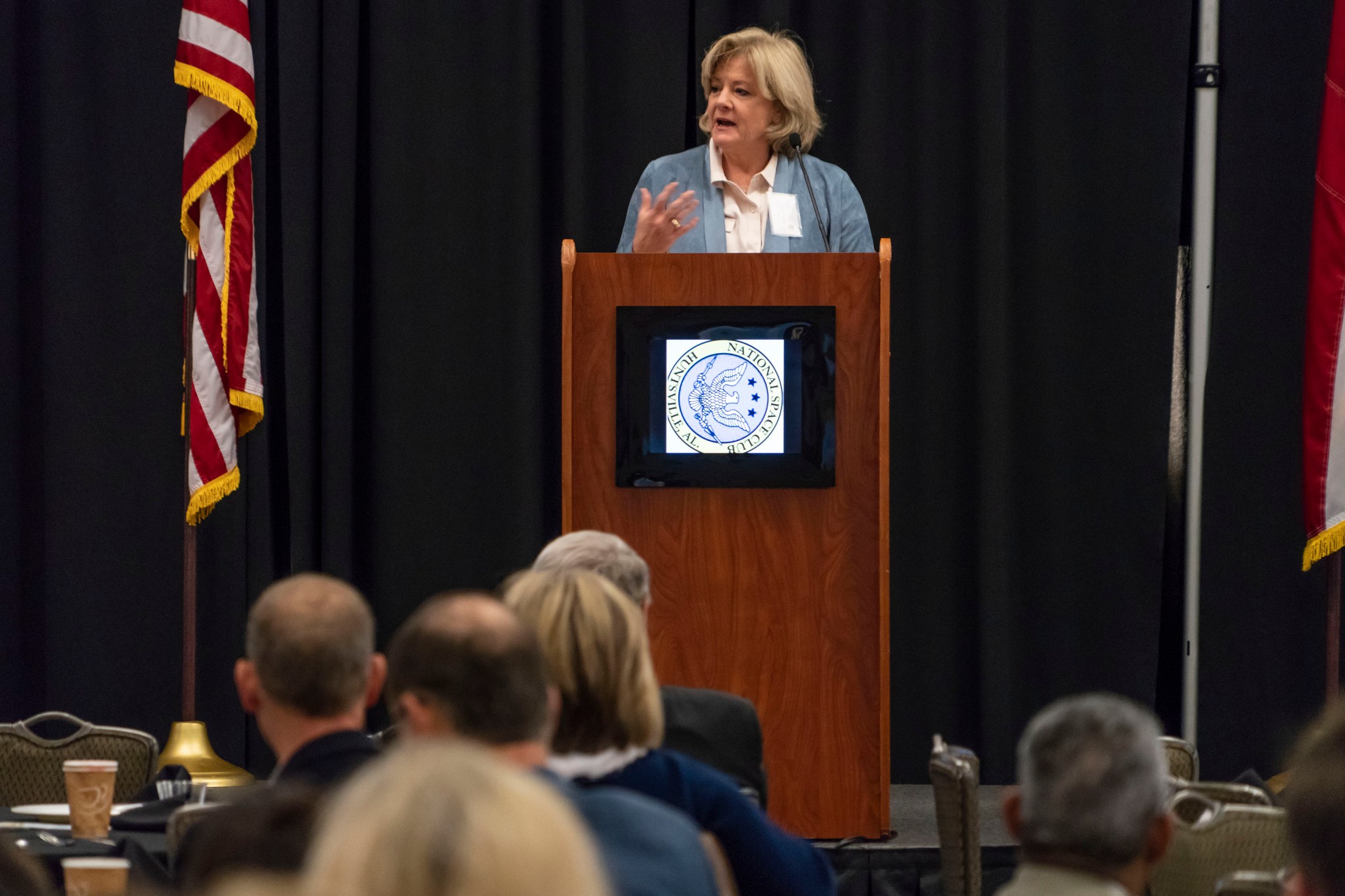
Jody Singer, director of NASA’s Marshall Space Flight Center, addressed members of the aerospace community at the National Space Club Huntsville breakfast Nov. 13 at the Jackson Center. Singer highlighted progress on NASA’s Space Launch System, Marshall’s role in achieving more than 100 hours of science research in a single week on the International Space Station and upcoming missions managed at Marshall, such as the Near-Earth Asteroid Scout — NEA Scout — and the Imaging X-Ray Polarimetry Explorer, known as IXPE. “We are on the brink of another great feat in American history,” said Singer. “The future is so bright and we can leave an unforgettable legacy, but we’ve got to have engineering excellence and the energy and will to do it. Delivering on our mission, strengthening our workforce and developing partnerships is going to be critical to achieving our goals.” (NASA/Fred Deaton)
International Space Station Astronaut Mark Vande Hei Visits Marshall Nov. 9
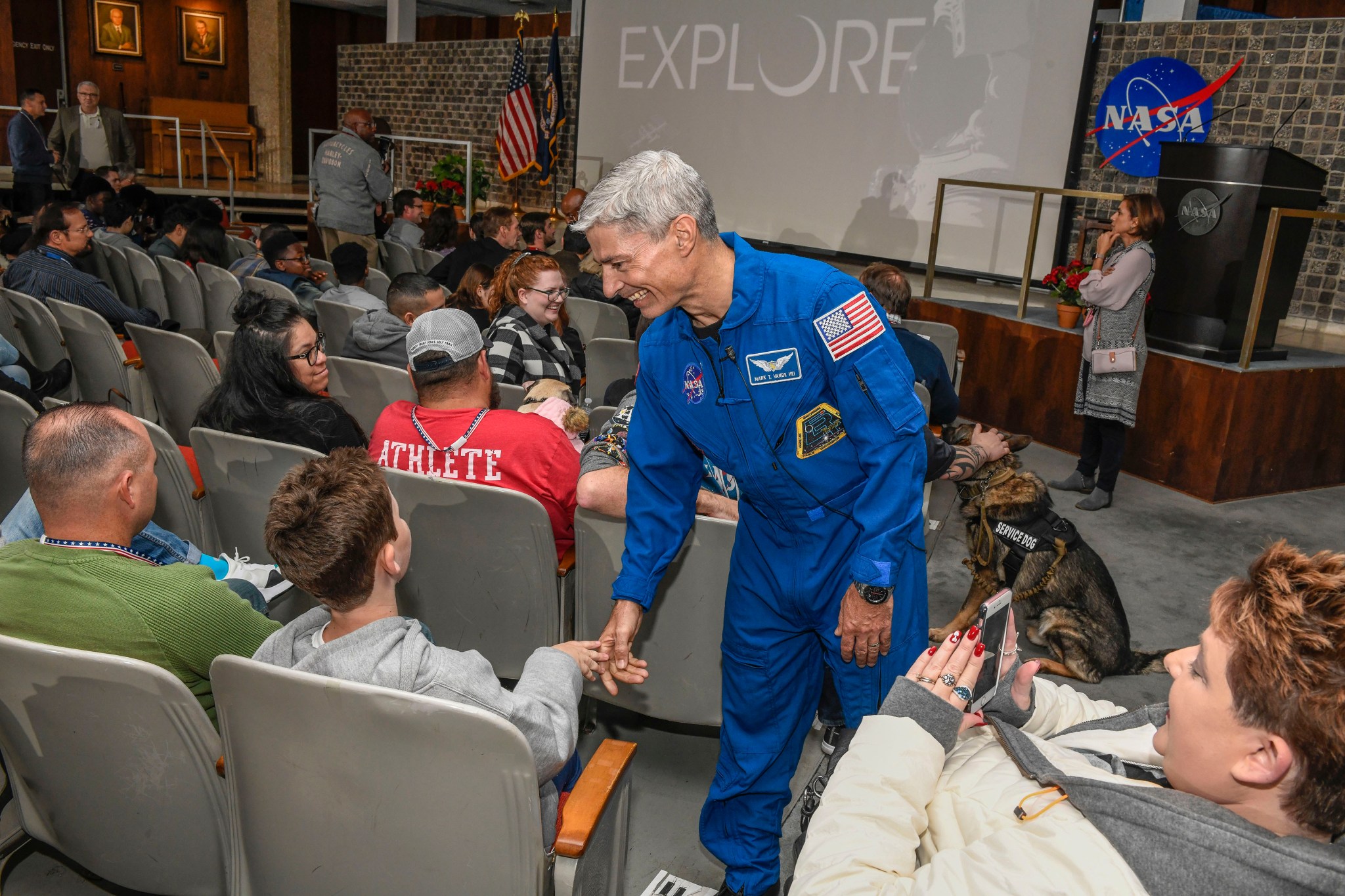
NASA astronaut Mark Vande Hei, a flight engineer during International Space Station Expedition 53/54, visits NASA’s Marshall Space Flight Center Nov. 9. He met with the Marshall team, American service veterans participating in the Wounded Warrior Project and area students, including Space Campers from the U.S. Space & Rocket Center. Vande Hei flew to the space station in September 2017 and returned in February 2018. During his months in space, he performed two critical spacewalks to replace the gripping mechanism and cameras on Canadarm2, and to lubricate newly installed components. (NASA/MSFC/Fred Deaton)
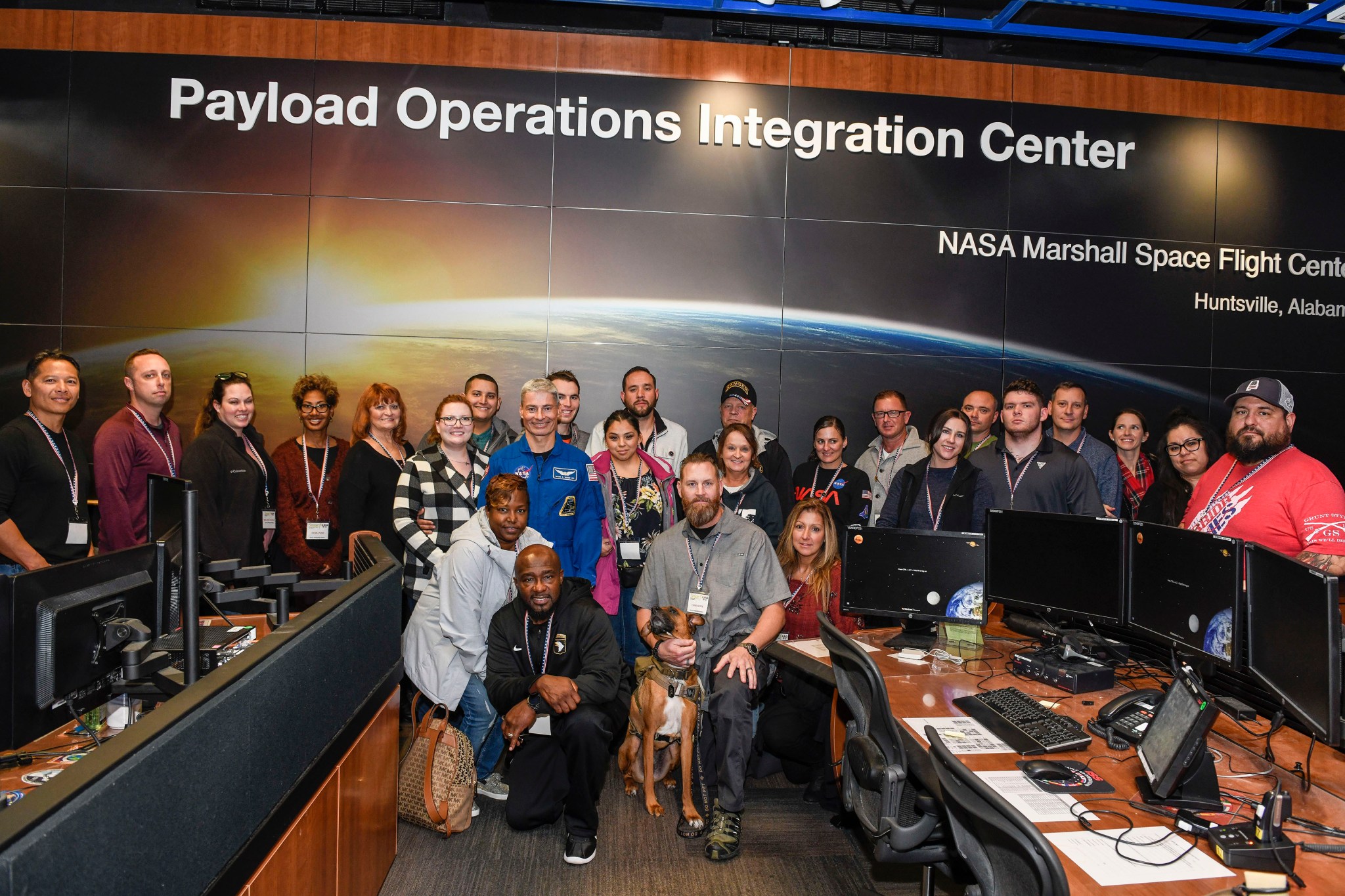
During his Nov. 9 visit to Marshall’s Payload Operations Integration Center, NASA astronaut Mark Vande Hei — in his blue astronaut jumpsuit — stands in the foreground among visiting disabled and wounded veterans, spouses and service animals. Vande Hei met with the Marshall cadre which oversees all science communications on the International Space Station. Marshall’s Payload Operations Integration Center, which operates around the clock, every day of the year, serves as the heartbeat for station research, coordinating all U.S. and international science experiments on the station and maintaining communications between station crew and researchers across the globe. (NASA/MSFC/Fred Deaton)
Sweet Sounds Fill Marshall’s Native American Heritage Month Program
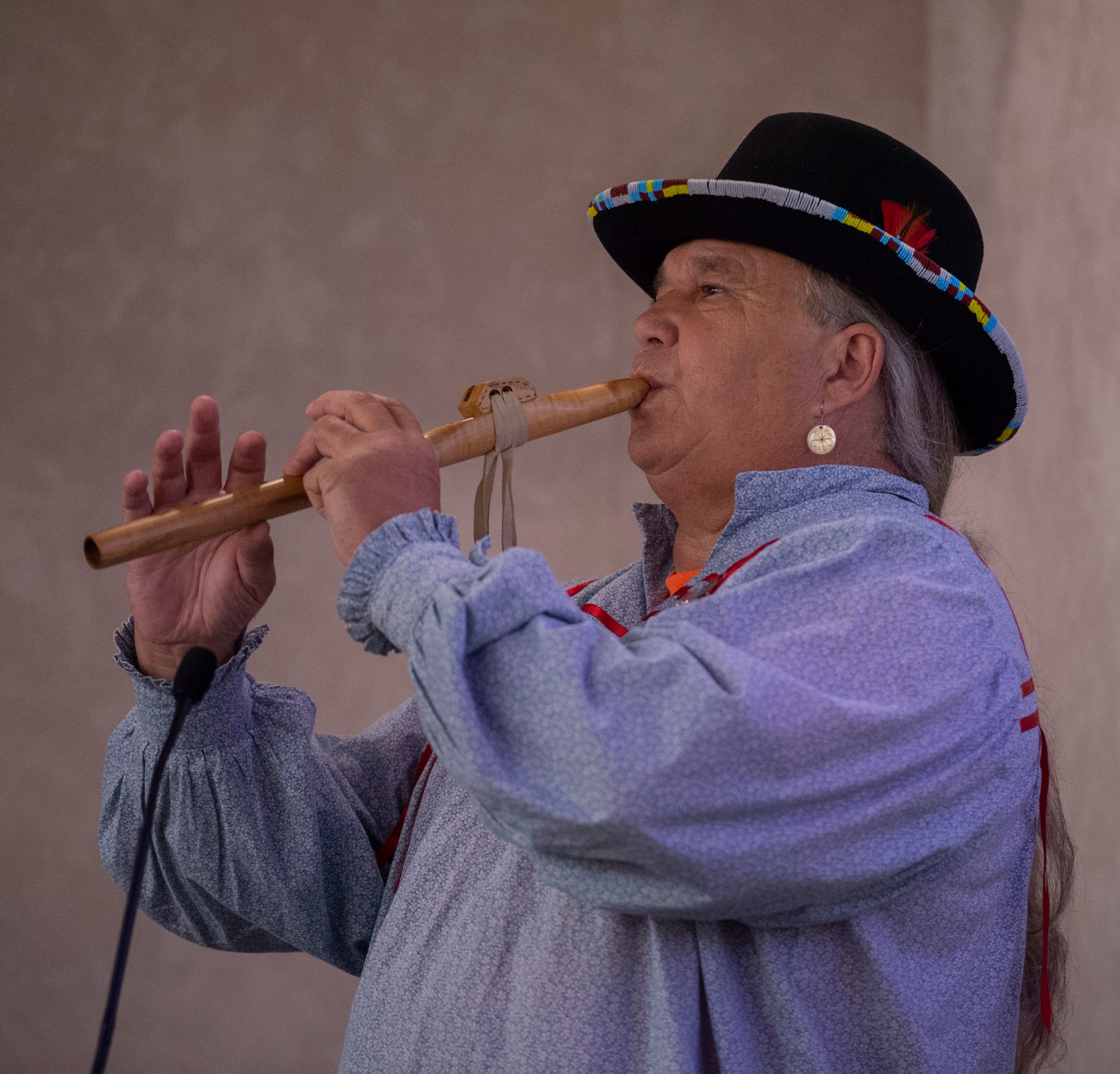
Jimmy Yellowhorse, from Decatur, Alabama, plays a hand-carved flute during the Native American Heritage Month program Nov. 13 at NASA’s Marshall Space Flight Center. Yellowhorse crafted the flute himself from cedar, walnut and mahogany, using traditional Cherokee techniques. The annual observance, coordinated by Marshall’s Office of Diversity and Equal Opportunity, honors the culture and contributions of Native Americans through storytelling and ethnic food samplings. (NASA/Emmett Given)
Marshall Donates Over 40,000 Pounds of Food to Feds Feeds Families Campaign
By Morgan Hopper
NASA Marshall Space Flight Center team members participated in the annual Feds Feed Families campaign — a nationwide effort by federal agencies to collect millions of pounds of non-perishable food items for those in need. The food drive, which ran from August until October, helped to serve local communities through the Food Bank of North Alabama.
Marshall’s Human Resources Office challenged the workforce to donate a combined 30,000 pounds of canned goods and other non-perishable food items. Team members exceeded that goal by more than 10,000 pounds, making the 2018 donation of 40,251 pounds the largest Feds Feed Families donation Marshall has ever made.
Feds Feed Families was created to help food banks and pantries stay stocked during summer months when they traditionally see a decrease in donations and an increase in need. One hundred pounds is able to feed a family of four for a week, and nationally, the campaign brings in almost 80 million pounds of food a year.
For more information on the national campaign, please visit the Feds Feed Families website.
Hopper, an ASRC Federal/Analytical Services employee, supports the Office of Strategic Analysis & Communications.
This Week in NASA History: Marshall Technicians Acceptance-Fire the S-IC-3 – Nov. 15, 1966
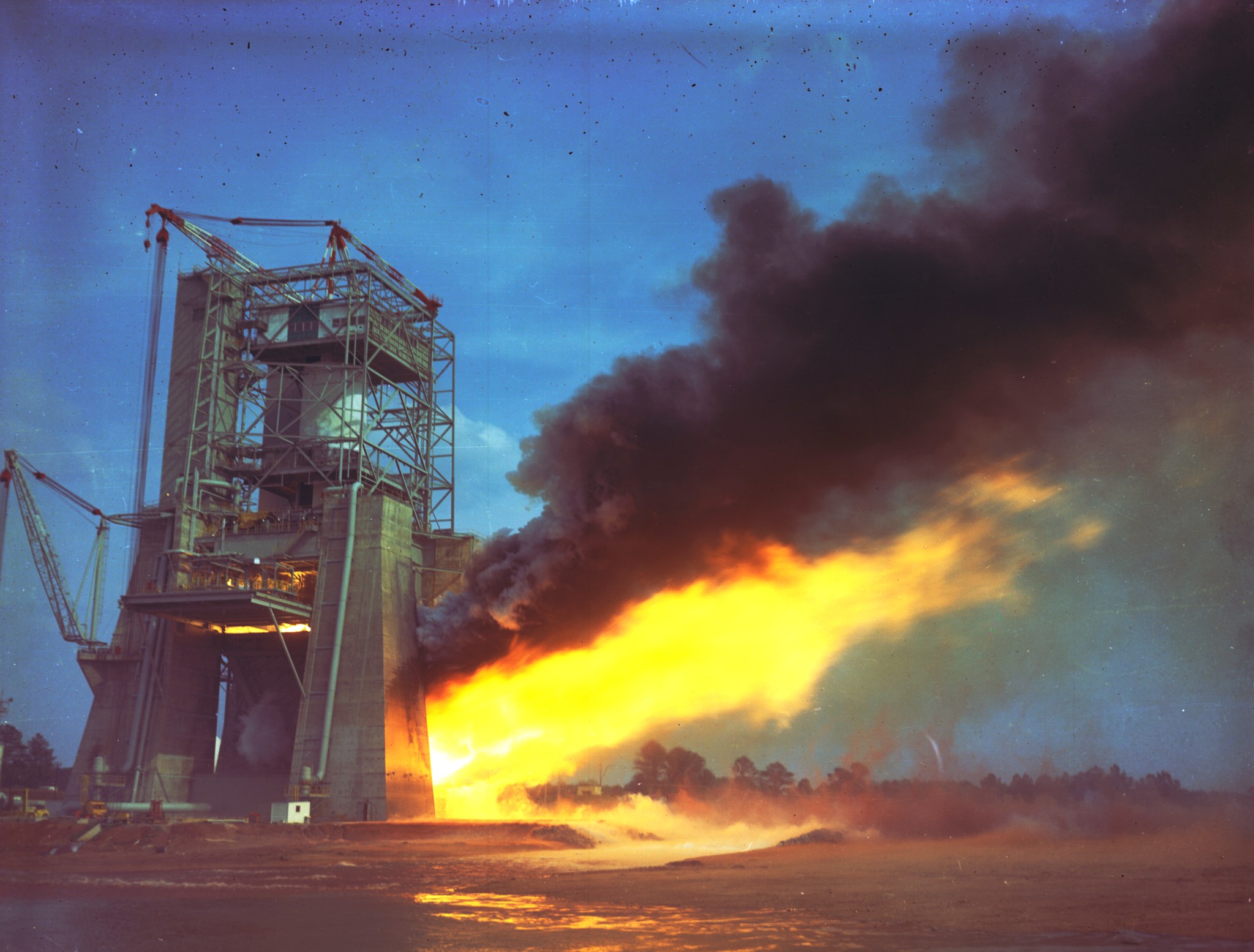
This week in 1966, NASA’s Marshall Space Flight Center technicians acceptance-fired the S-IC-3, or first stage of the Saturn rocket, for 121.7 seconds. This was the last planned firing of the S-IC at Marshall. The S-IC was powered by five F-1 engines, each producing 1.5 million pounds of thrust. Here, an F-1 engine is test fired at Marshall’s S-IC Static Test Stand. From October 2018 through December 2022, NASA will mark the 50th anniversary of the Apollo Program that landed a dozen astronauts on the Moon between July 1969 and December 1972, and the first U.S. crewed mission — Apollo 8 — that circumnavigated the Moon in December 1968. Today, Marshall is developing NASA’s Space Launch System, the most powerful rocket ever built, capable of sending astronauts to the Moon, Mars and deeper into space than ever before. The NASA History Program is responsible for generating, disseminating, and preserving NASA’s remarkable history and providing a comprehensive understanding of the institutional, cultural, social, political, economic, technological and scientific aspects of NASA’s activities in aeronautics and space. For more pictures like this one and to connect to NASA’s history, visit the Marshall History Program’s webpage. (NASA)
Obituaries
Ray V. Hembree, 95, of Huntsville, died Nov. 6. He retired from the Marshall Center in 1983 as deputy director of the Space Sciences Laboratory. He is survived by his wife, Dottie Hembree.



























